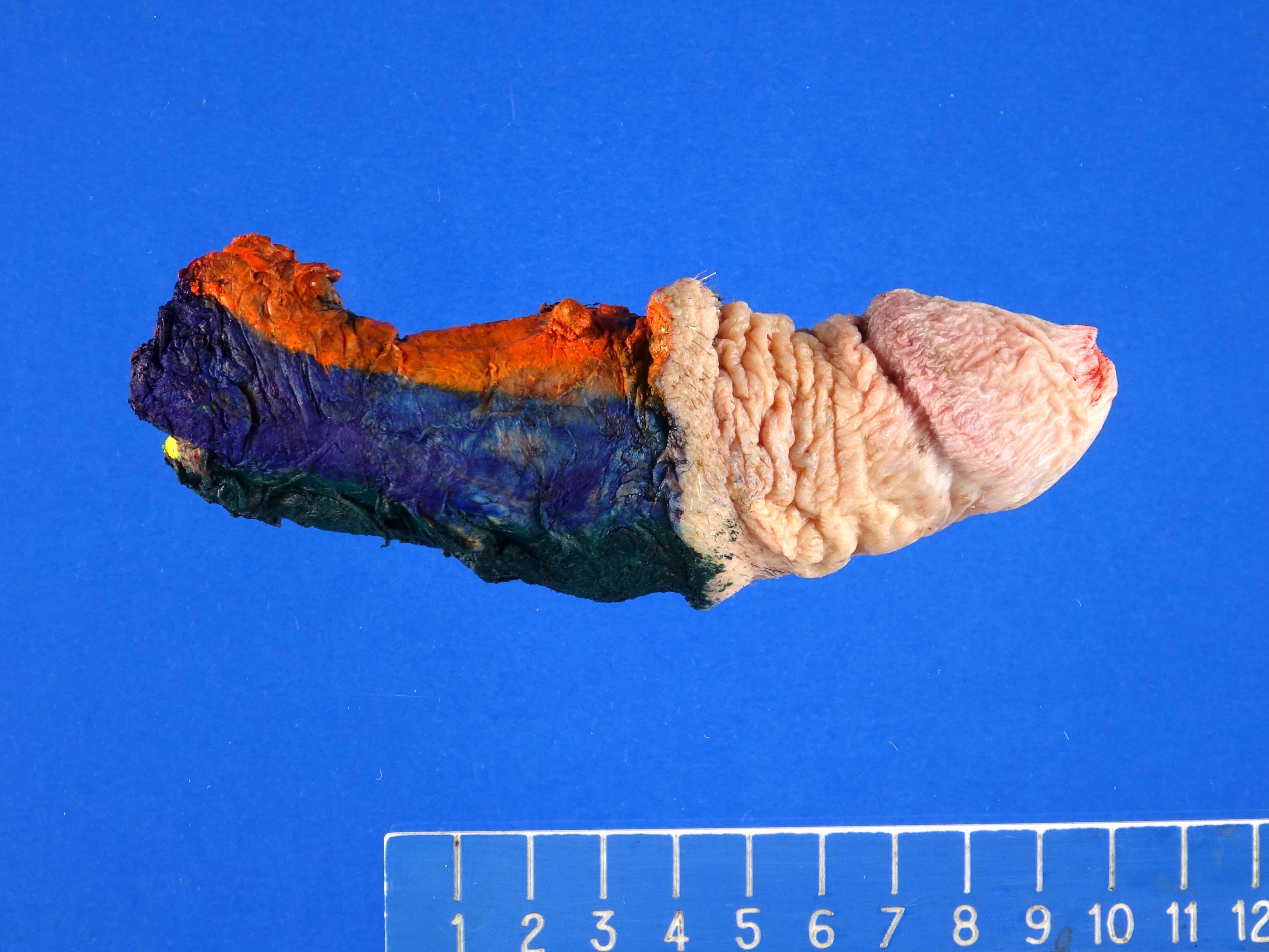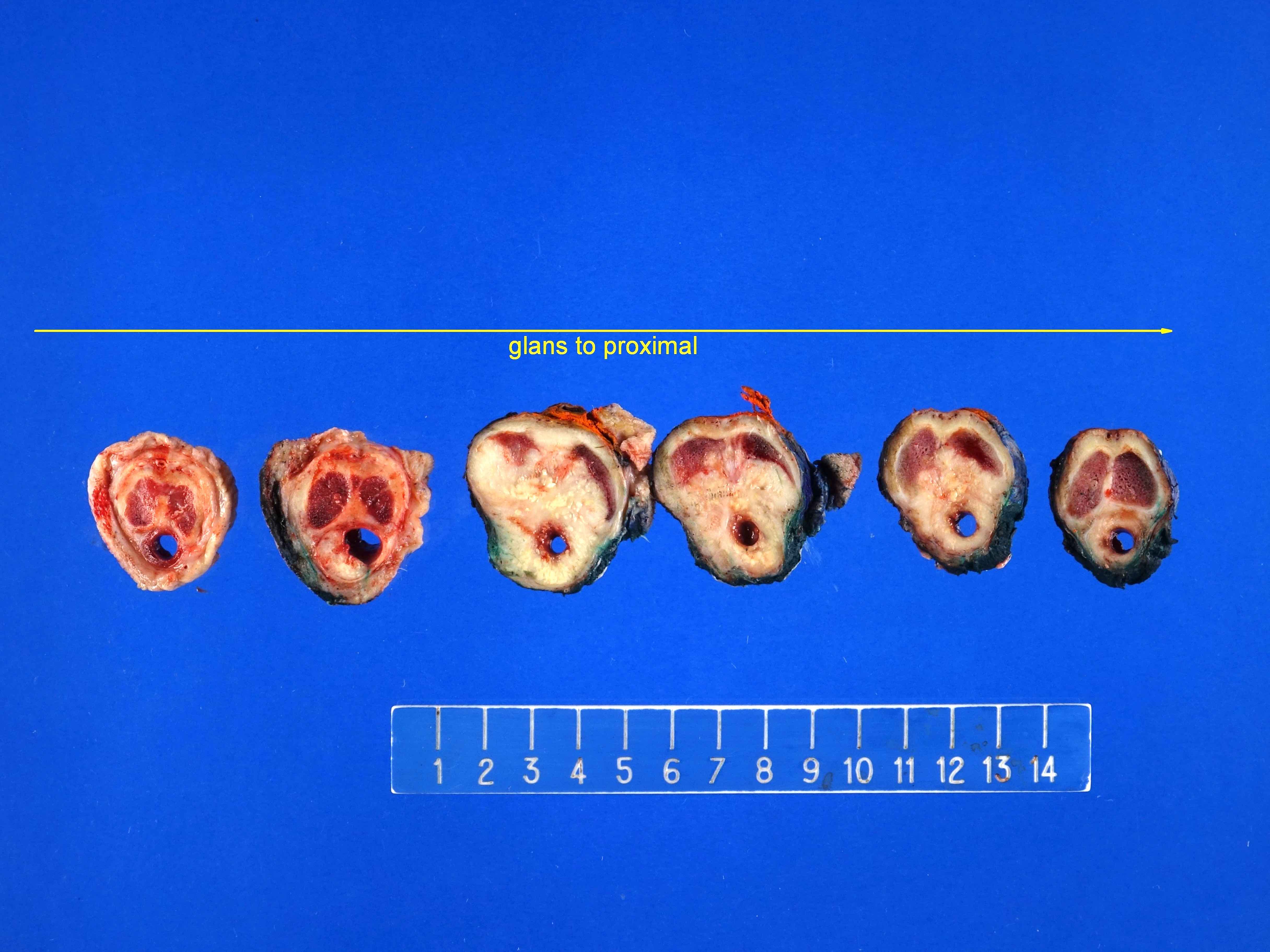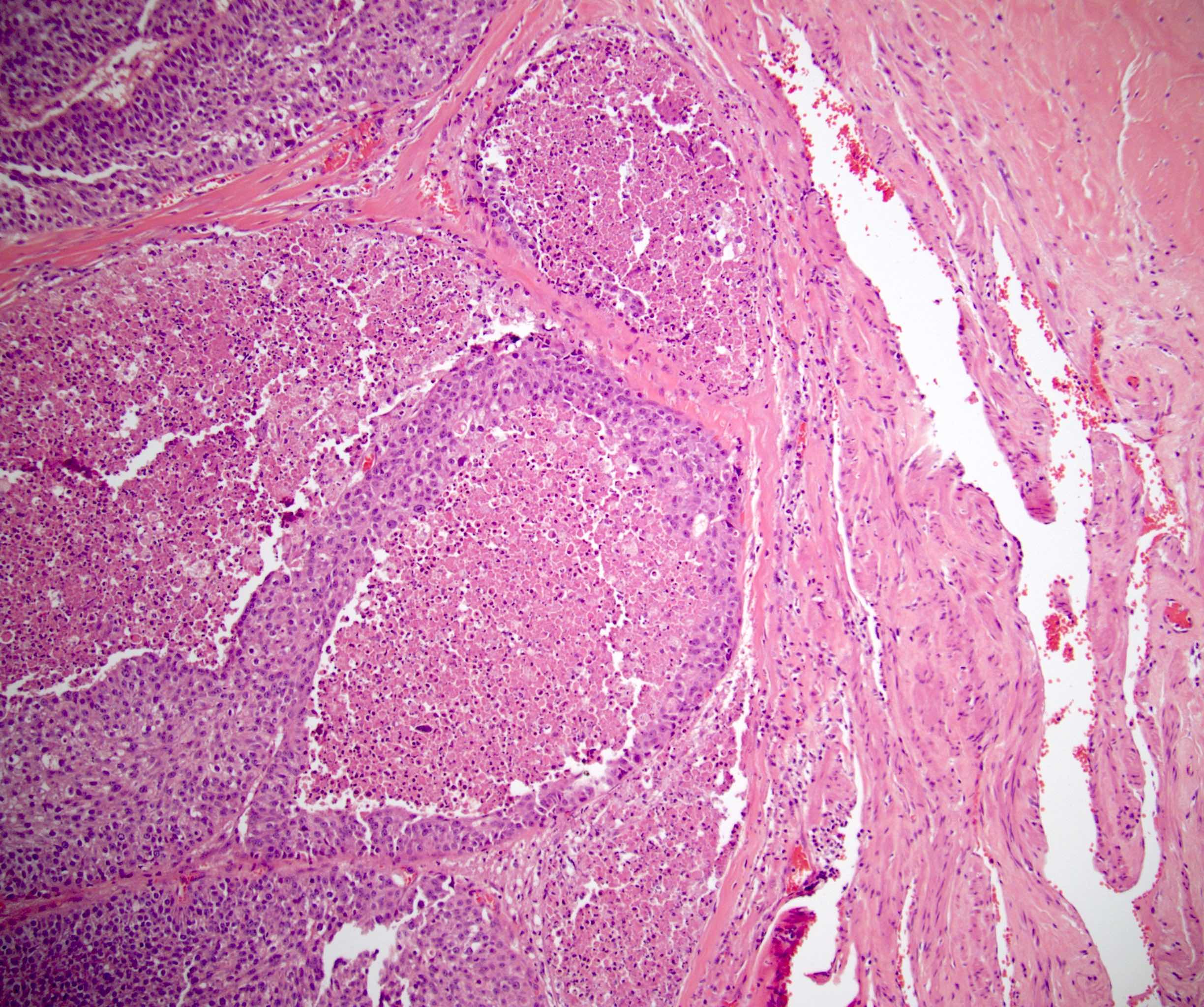Primary tumor (pT)
Prostatic urethra
Penile urethra
- pTX: cannot be assessed
- pT0: no evidence of primary tumor
- pTa: noninvasive papillary carcinoma
- pTis: carcinoma in situ of the prostatic urethra, periurethra or ducts
- pT1: invasion of prostatic urethral subepithelial connective tissue
- pT2: invasion of prostatic stroma
- pT3: invasion of periprostatic fat
- pT4: invasion of adjacent organs (example: bladder wall, rectal wall)
Penile urethra
- pTX: cannot be assessed
- pT0: no evidence of primary tumor
- pTa: noninvasive papillary carcinoma
- pTis: carcinoma in situ
- pT1: invasion of urethral subepithelial connective tissue
- pT2: invasion of corpus spongiosum
- pT3: invasion of corpus cavernosum
- pT4: invasion of adjacent organs (example: bladder wall)







